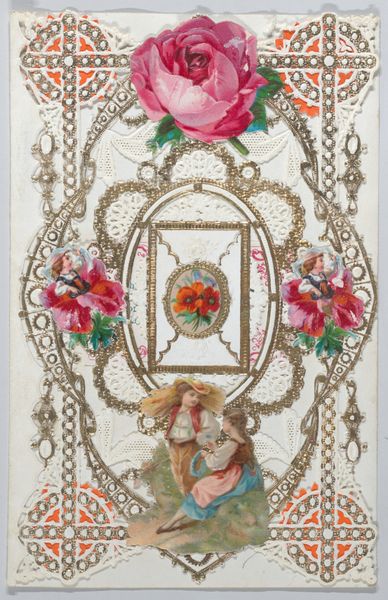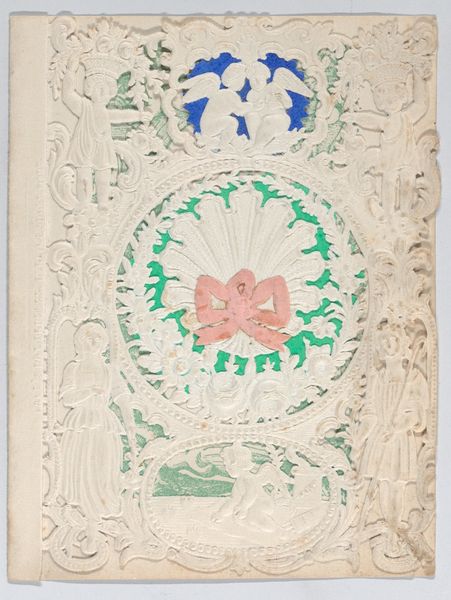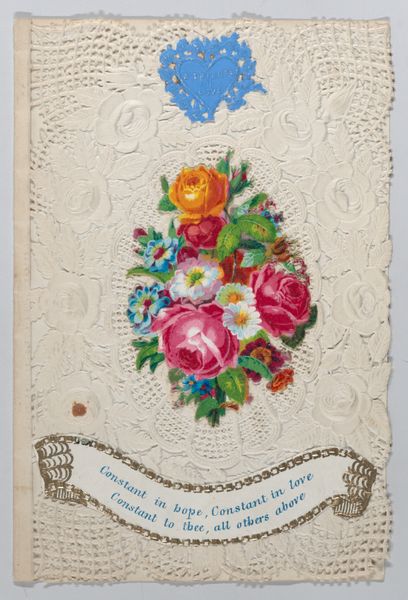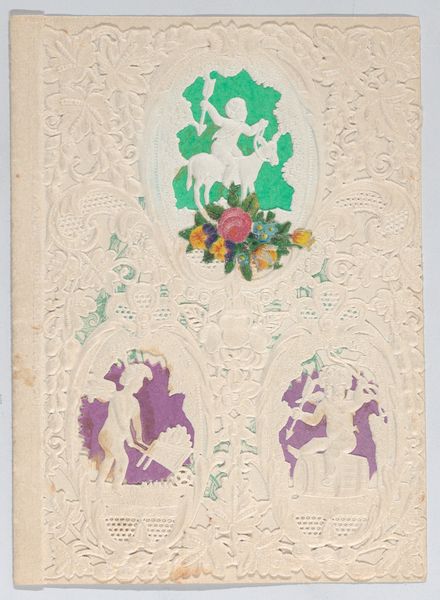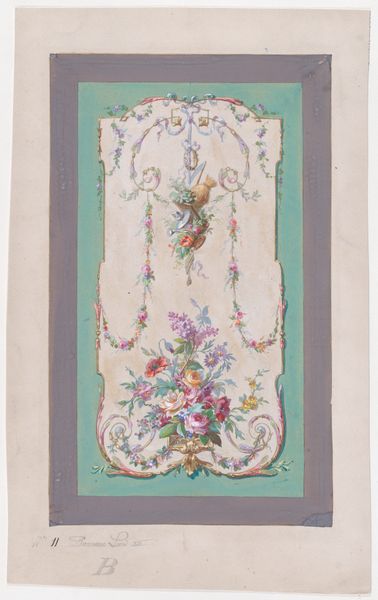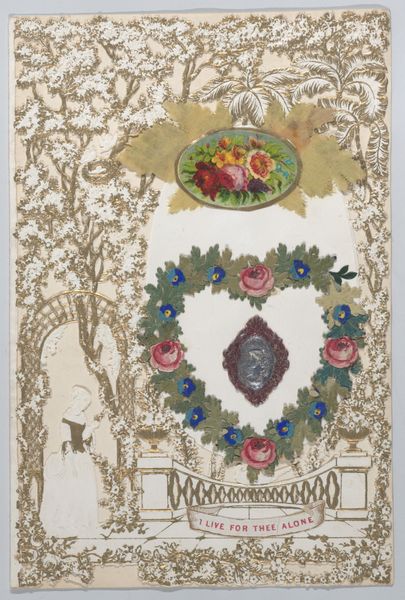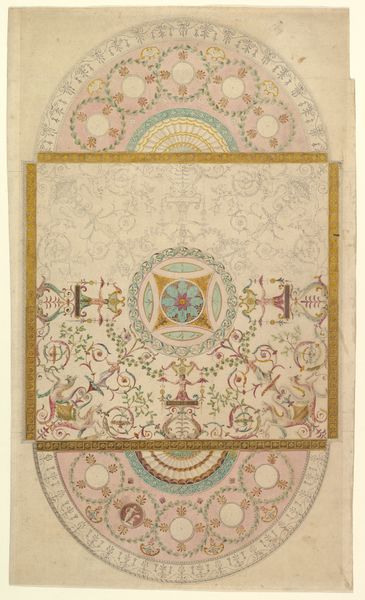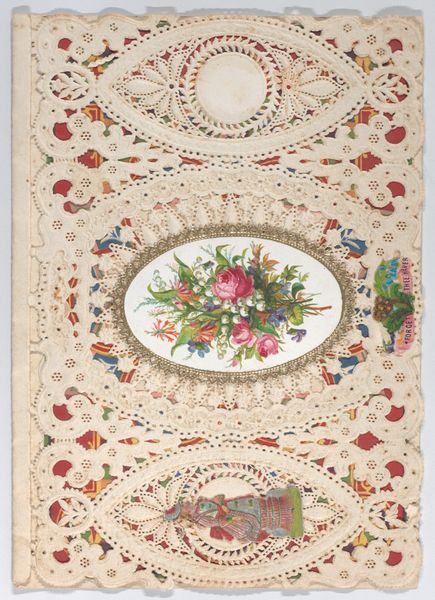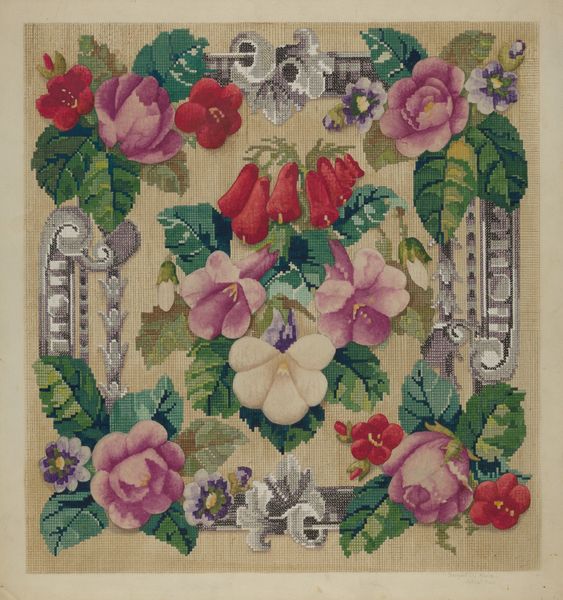
Dimensions: Width: 3 1/4 in. (8.3 cm) Length: 4 9/16 in. (11.6 cm)
Copyright: Public Domain
Curator: At first glance, it feels like an explosion in a doily factory. Editor: And a rather lovely explosion it is. We’re looking at an object titled "Valentine", created in 1880. It's currently held at the Metropolitan Museum of Art. The piece primarily uses paper, combining drawing and printmaking techniques. Curator: Right, but it's not *just* paper. It's about how the paper is manipulated: die-cut, embossed perhaps, assembled with such intense, almost obsessive detail. Someone put in a lot of labour into this thing. Consider also that it likely was produced on a larger scale in a factory with a clear division of labor. How was that labor distributed, what demographics were affected by its exploitation, and how did this ultimately contribute to both an expanding commercial market as well as cultural norms and sentimental expression? Editor: I appreciate that reading. It takes Valentine’s Day out of the realm of pure romantic love and firmly roots it in a historical marketplace, especially regarding social codes. Note that printed imagery was becoming more commonplace and the democratization of the image gave rise to novel forms of interpersonal communication, the valentine itself! This object signals the dawn of mass media and how individuals participate in its development, through purchase and dissemination. Curator: Precisely! And the fact that it’s Valentine’s Day matters hugely. This isn't some unique expression; it's participating in a widespread commercial and cultural phenomenon. How did gender and class dynamics influence these sorts of mass produced commodities for the public? What behaviors, symbols, messages and ideologies are reproduced and reified through them? Editor: The lace paper, and the single rose certainly evoke ideals of feminine delicacy and beauty during that period. The valentine becomes a stage on which love, beauty and courtship get displayed, and subtly instructed, in popular imagery. Curator: I wonder about the individuals, probably women, who assembled them. Were they also consumers of the ideals represented or was that just a source of profit to them? It raises uncomfortable questions about exploitation and the true value of affection, particularly when mediated by consumerism. Editor: It seems appropriate to address such a discomfiting topic with such an otherwise delightful visual artifact. I find myself quite taken with the layers upon layers, but I do concede the value in remembering who produced it and to what end, beyond merely romantic fulfillment. Curator: Indeed. The "Valentine" forces us to remember the human element embedded, however obscured, in its production, its distribution, and its consumption. It encourages me to reconsider the commercial apparatus within which such sentimentality thrives. Editor: I agree. Thinking through all these dimensions, what started as an innocuous greeting card has turned into a really rather pointed observation. Thank you for that perspective.
Comments
No comments
Be the first to comment and join the conversation on the ultimate creative platform.
